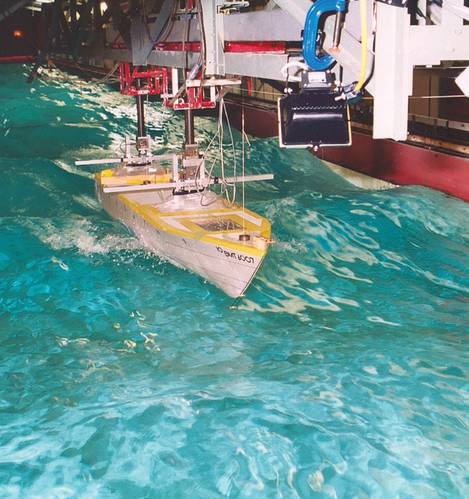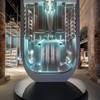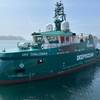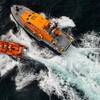What Keeps ‘Good Ship’ RINA Buoyant
When the Institution of Naval Architects was formed in 1860 it became one of the bastions of Victorian engineering, enabling and encouraging the exchange of knowledge, information and good practice in the field of naval architecture. The basic principles laid down in the early days saw the Institution thrive as a body representing all the maritime nations of the world and this was recognized in its incorporation by Royal Charter in 1910 as the Royal Institution of Naval Architects (RINA). RINA’s positive impact on the global maritime industry through the 20th century should not be underestimated. However with the explosion of the internet and many highly effective professional networks therein one might argue that a Royal Institution is nothing but a quaint anachronism. Indeed professional associations of all types across the world have to fight hard just to stay afloat and many are sinking without trace. Yet RINA not only remains determinedly afloat it is showing remarkable growth on all four points of the compass. Trevor Blakeley, Chief Executive of RINA and Peter French, former President of RINA and Chief Executive of BMT Group, discuss what has contributed to this remarkable success story and what decisions and challenges have ensured its continued buoyancy.
It is fair to say that the world we live in today would be a very different place without the professional institutions that took the various disparate strands of engineering and weaved them into cohesive professional entities thriving on best practice and the desire to improve. Born out of the Second Industrial Revolution the professional institutions gathered and shared breath-taking technological progress born out of industry’s insatiable hunger for engineering solutions to apparently insurmountable challenges of the day. As the industrial economy evolved into a service economy the profile of engineering waned and, like many professional institutions, RINA found itself needing to change and adapt in order to remain relevant. By the mid-1990’s the Institution was not in great shape and membership had all but stalled.
The last two decades, however, has seen The Royal Institution of Naval Architects (RINA) develop from a failing anachronism to a thriving professional body that develops knowledge, talent and quality while adding value to UK PLC and sharing knowledge with the world. It has travelled the path from financial instability to commercial solvency and, in a world which has struggled to attract bright young things into the profession; RINA’s membership has grown from 5123 in 1997 to some 9816 last year. This has been achieved in no small part to a deliberate and concerted effort to transform the membership profile by focussing on securing increased membership across the globe. This strategy has seen the 17 branches which existed in 1997 more than double to 38 in 2013 with multiple energetic, enthusiastic hubs being established in Australia and across Asia. RINA’s reputation is now confident and dynamic - membership is booming and branches proliferating. The decisions and challenges that contributed to this renaissance have largely been concerned with redefining RINA’s role, modernizing its operation and strengthening its financial position; all of which had to be delivered with a healthy dose of dynamism and determination. It’s fair to say that Engineers don’t join professional institutions just for the sake of being a member; membership has to mean something. It wasn’t a case of turning up at companies, universities and schools and saying ‘join RINA’. Being on the ground, visible and in attendance, travelling for many hundreds of hours and many thousands of miles has clearly been important. But, there also needed to be a clearly articulated rationale, communicated with conviction to engineers on every point of the compass for this to result in such resurgence in membership. Resurgence was a reaction to the Institution addressing the challenge and becoming relevant to a new breed of engineer.
Defining that compelling rationale to answer the question ‘why become a member?’ required a clear understanding of what the role of a modern professional institution should be. A professional engineer is defined by not only what he or she does, but the manner in which they practice their profession. That is the difference between a profession and a job, between a professional engineer and an engineer. The role of the modern Institution is to enable and advance how the individual engineers conduct themselves and progress their career for the benefit of the profession as a whole. And, if the institution is to ‘enable and advance’ it must demand in return that standards of behaviour and professional competence are met because these are key attributes which directly reflect on how the profession is perceived as a whole. Hence effective governance, setting and measuring professional standards, academic achievement and professional development all form part of the modern Institution’s remit – in addition to promoting and sharing knowledge and expertise. Achieving this clarity of perspective enabled RINA to present itself in a pertinent and coherent way to the global engineering community.
So, if being a member of an institution such as RINA means a commitment to behaving according to the rules and standards set down and enforced by the Institution in order to benefit from being under its auspices; what are the benefits?
The value of being part of a community of likeminded individuals sharing and promoting their ideas and achievements is that it enables the community to extend its skills and knowledge while adhering to certain standards. It is never more accurate than in this context that the whole is worth more than the sum of its parts. Individually naval architects can achieve remarkable things; together they can push the boundaries of what is currently considered possible.
Less esoteric, perhaps, is what membership means to those buying the services of the profession. In this context membership gives them a point of both assurance and differentiation. This is perhaps the key to RINA’s renaissance overseas. As different parts of the world have matured and industrialized, international membership of RINA has been embraced. Some parts of the world, which historically may have been considered somewhat suspect in their practices, have embraced the concept of a professional community, recognising the need and benefit of community support and professional standards both for self-advancement and economic advantage.
Essentially the value of RINA bringing together and promoting best practice is in fact as valid today as it was in 1860 - now with the advent of computing it is able to deliver it somewhat faster.
Modernizing RINA’s operations to make them lean and efficient necessitated a change in the structure to enable effective decision making, responsive to the needs of the profession and the Institution. Creating a membership structure and events program which encourage and promotes the profession to youngsters has been a priority and one that is beginning to reap rewards. There are now are 41 Student Naval Architect Awards presented to the most promising naval architecture students all around the world. The vast majority of these awards are sponsored by industry, reflecting the status with which RINA initiatives are now viewed. Deciding to remain focused on naval architecture and not diluting membership by perhaps merging with other institutions was a decision not taken lightly but was, absolutely, the right one. The decision enabled the communication to remain tight and relevant to the audience but, interestingly, it also meant that in order to grow RINA had to put resource and effort in building, supporting and recognizing the importance of its global membership. Establishing a credible multi-national platform became key to securing RINA’s future and the Institution has worked hard to achieve international credibility. When the International Maritime Organization (IMO) recognized RINA as a Non-Governmental Organization with Consultative Status in 2002, this was seen as an endorsement of the decision to remain independent and focus exclusively on the international community of naval architects. The buoyancy of RINA has been enabled because naval architects believe the Institution is relevant and delivers value. As the Institution’s current guardians we identified the diverse challenges it faced and took the decisions we considered necessary to make the best of each set of circumstances. We had no way of knowing if we would be successful but the idea of failure ‘on our watch’ was sufficiently unpalatable that we never dwelt on it for long. The focus at every stage was, and continues to be, to deliver the best-in-class of whatever we are doing in order to meet the needs of the profession. It is perhaps this focus which has earned us the engagement and loyalty of naval architects across the world. ‘Best-in-class’ is possibly an ethos shared by our members and why RINA is now regarded as a highly respected professional institution around the world. With members in over ninety countries, it is widely represented in industry, universities and colleges, and maritime organisations world-wide, RINA appears to be successfully delivering the remit set out in 1860 to ‘advance the art and science of ship design’ and is set to continue to do so assuming a fair wind and a strong hand on the helm.
The Authors
Peter French was appointed Chief Executive in 2005. A maritime civil engineer by profession, he joined BMT in 1990, before which he was a partner in Peter Fraenkel and Partners. Peter is also Chairman of the Society of Maritime Industries and of the International Transport Intermediaries Club, Vice President of the Association of the Independent Research & Technology Organisations and of European Co-operation in Maritime Research, a member of the Business Advisory Board of Living With Engineering Change and of the Advisory Board of the University of Southampton’s School of Engineering Sciences. He is a Fellow of the Royal Academy of Engineering and a Fellow and President of the Royal Institution of Naval Architects until July 2014.
Trevor Blakeley was appointed Chief Executive of The Royal Institution of Naval Architects in April 1997 after a career as an officer in the Royal Navy. A Naval Engineering specialist, he enjoyed a wide range of seagoing and shore appointments after reading for his degree at the Royal Naval Engineering College, Manadon. He served at sea in minesweepers, frigates, destroyers and aircraft carriers. Shore appointments included specialist technical teams, ship construction, training and general staff appointments in technical and personnel support.
(As published in the January 2015 edition of Maritime Reporter & Engineering News - http://magazines.marinelink.com/Magazines/MaritimeReporter)


















